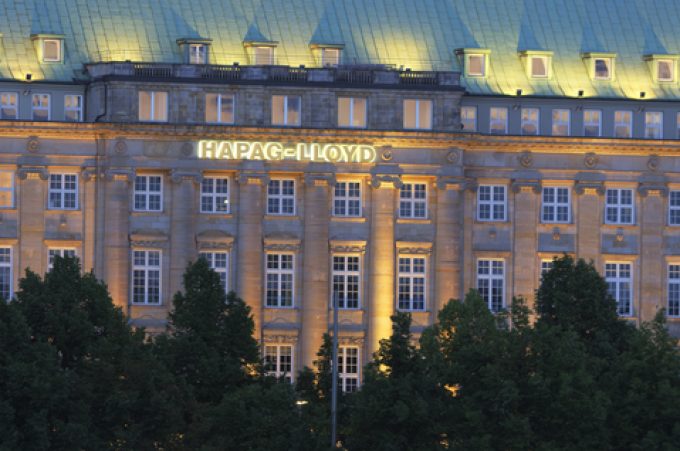Conf call redux: does Kuehne + Nagel know its toys from its teus?
Yo bro, where’s the growth?

Hapag-Lloyd ended 2023 with a net profit of just $3.2bn, compared with $18bn the previous year, as its average freight rate – on flat liftings of 11.9m teu – plunged from $2,863 per teu to $1,500.
Moreover, the German liner and terminals group fell into the red in the fourth quarter of last year, with an operating loss of $251m, as that average collapsed to $1,190 per teu during the period.
Hapag-Lloyd said for the current financial year, it expects its EBIT result to be in the range of a $1.1bn loss to a $1.1bn profit – although it added that the forecast “remains subject to considerable uncertainty, given the volatile development of freight rates and geopolitical challenges”.
This morning, CEO Rolf Habben Jansen said Hapag-Lloyd had enjoyed “a solid start” to the year, financially, with a “single-digit percentage increase in volume in the first couple of months”.
Pressed on the wide-range guidance for 2024, he said a realistic result would be in its mid-point – “a black zero”.
“Market fundamentals will remain challenging for the next couple of years,” said Mr Habben Jansen, who believes the Red Sea crisis could be over by end-Q2 or beginning of Q3, when weak demand and overcapacity issues will again hobble the industry.
However, currently, neither Hapag nor its peers can get enough ships to plug the gaps in their networks caused by the longer voyage times around the Cape of Good Hope.
“We don’t only need more ships, but we need them to sail faster,” said Mr Habben Jansen, who today also saw his contract extended until 31 March 2029.
He reiterated that the primary reason for Hapag-Lloyd’s resigning from THE Alliance to join Maersk in the Gemini vessel-sharing agreement next February was to improve schedule integrity.
“Currently, our on-time schedule reliability is just not good enough,” he said. “Gemini will offer shippers significantly higher schedule reliability.”
Asked by The Loadstar which carrier had proposed the hub & spoke concept for Gemini, Mr Habben Jansen said “both had had the idea”, and that internal doubters within Maersk and Hapag-Lloyd had been “convinced by the hub control” of the new network.
Moreover, he said, the shuttle vessels deployed in Europe and Asia would not be “classic feeders of 1,500-3,000 teu”, but rather “ships of 5,000-6,000 teu, or bigger” which, furthermore, would mainly only operate port-to-port – against traditional feeder networks of servicing a number of ports and terminals and thus being at risk of delays.
Unlike Maersk, Mr Habben Jansen said Hapag-Lloyd “would definitely not become an integrated logistics provider”, instead the group would continue to expand in the terminal sector.
The turnover from its terminal & infrastructure business unit came in at $202m in 2023, compared with $178m in 2022, as Hapag aggressively grew the sector. However EBIT fell to $21m, against $102m in 2022, due to a sharp drop in storage revenue as congestion at ports eased considerably.
Hapag-Lloyd is currently ranked the fifth-largest container line, with a fleet of 278 ships for a capacity of 2m teu, and has an orderbook of around 200,000 teu.
It ranks just above its current THE Alliance partner ONE, which operates a fleet of 232 vessels for a capacity of 1.8m teu, but has a larger orderbook, of some 540,000 teu.
Check out Loadstar Premium’s analysis of Hapag’s latest numbers here
Comment on this article